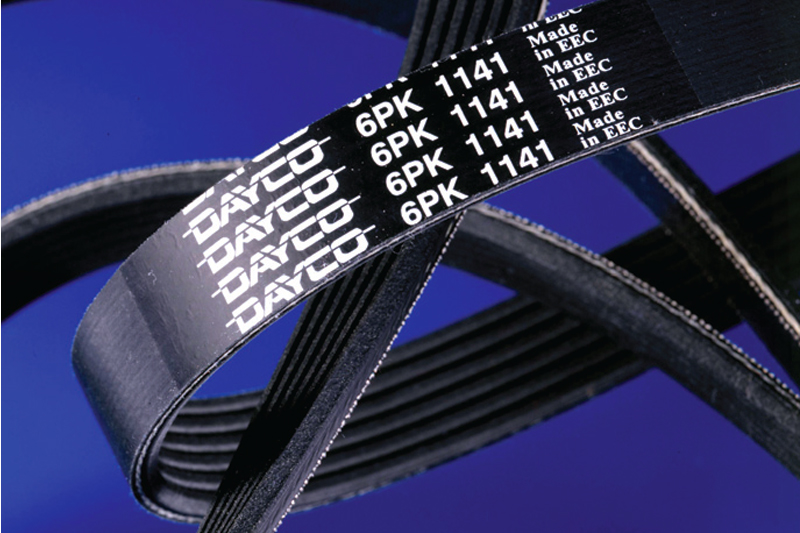
There is a myth within the aftermarket that numerous power transmission belt specifications, particularly for the auxiliary drive system, are generic rather than vehicle specific, which is at odds with normal practice for many other engine related products and completely alien to Dayco’s tailored engineering ethos. Here, Dayco discusses the facts.
One of the more obvious repercussions of this ‘one size fits all’ mentality, has been the resulting problems that have arisen following replacement of the original equipment auxiliary belt. Despite the practices of some aftermarket suppliers, the OE auxiliary belt is specifically designed to conform to very strict dimensions and so, where replacement belts of a more generic rather than vehicle specific size have been fitted, failures have occurred.
It is however, not just the belt size that matters, it’s the way the belt is manufactured and for some particular applications, the construction has been improved to include aramid fibres, for example.
The combination of non-application specific sized belts and non-conforming construction is a recipe for disaster and with several Volvo applications in mind, the resulting belt failures have not only caused inconvenience and left motorists stranded, but there have been cases when the broken belt has also damaged auxiliary components and even caused the drive system to seize, leaving a hefty bill at the door of the workshop.
However, the policy followed by Dayco, a leading engine products and drive systems supplier for the automotive, industrial and aftermarket industries, is to manufacture only vehicle specific products, which therefore provide independents with an OE quality solution that is designed to the precise specification, in terms of both their dimensions and construction, to the OE article. In addition, Dayco is the OE supplier of the auxiliary belt for the several Volvo applications, so only by fitting a Dayco Poly- V belt, can the independent workshop be certain to fit a like-for-like replacement for these and many other makes and models.
By applying this strategy, the supplying motor factor and installing technician can have complete confidence in the replacement solution, which affords the motorist complete peace of mind, on the return of their vehicle.
Problems and Solutions
Although perhaps not initially thought of as a safety critical item, failure of the auxiliary belt can, in fact, have very serious consequences. On a typical, non-motorway, journey the auxiliary belt will regularly run at a surface speed of 25mph – and considerably faster when travelling at speed.
By their very nature, complicated, multicomponent drive systems are far more susceptible to issues such as pulley misalignment, which can cause premature belt wear due to material loss from the rib surface. This wear changes the profile of the ribs and reduces the contact area on the pulleys, which can cause slippage and affect the performance of the components the belt is designed to drive. In addition, the belt can become noisy, adversely affecting the driving environment for the vehicle’s occupants.
Unlike the previous generation neoprene rubber based belt, the EPDM formulated belt used nowadays, wears very differently. So whereas during use, the previous technology would gradually lead the belt to perish by cracking or chunking – when a section of belt actually comes off – the current EPDM technology belt wears gradually, not unlike the wear to a tyre, which actually makes it more difficult to detect.
As a result, technicians should use the vehicle’s mileage as their first point of reference, which means that if the vehicle has covered 60,000 miles or more, the belt should be thoroughly inspected and if it shows any sign of damage or wear, should automatically be replaced.
To help technicians correctly assess the condition of the belt, Dayco has designed the aWEARness gauge, which provides them with three ways to check whether the belt needs to be replaced or is okay to be reinstalled. The two most relevant to an EPDM belt are the wear indicator bar, which highlights material loss and the profile indicator, which reveals whether the belt retains its correct form. Both reflect the level of wear and if the belt fails either check, it must be replaced.
Wear on the belt could also indicate wear to the other components in the auxiliary drive system, which is why technicians also need to thoroughly assess the condition of these associated parts. Particular attention should be paid to the tensioner, because, in common with the timing drive system, the wrong tension on the belt can cause wear, leading to failure.









